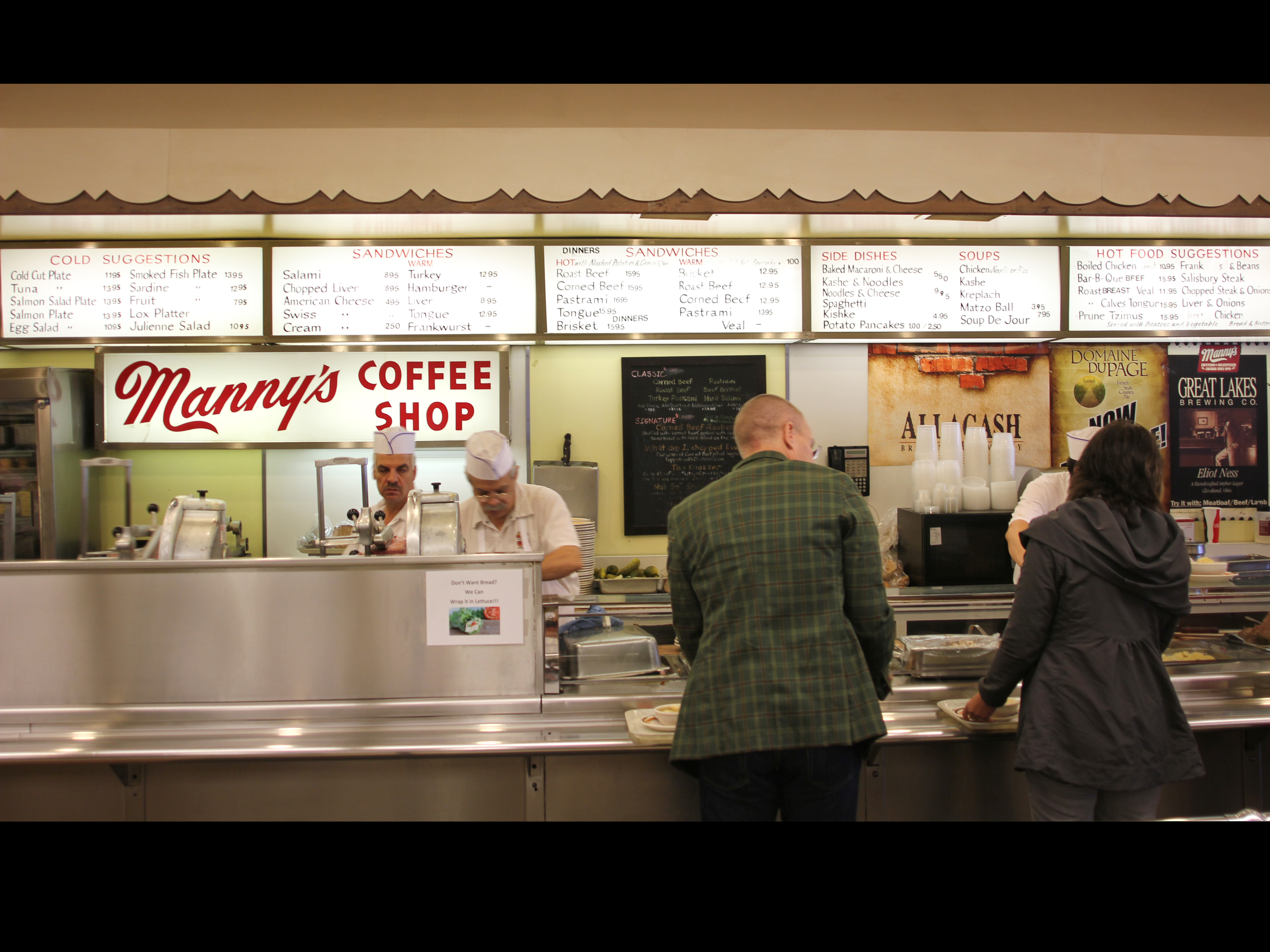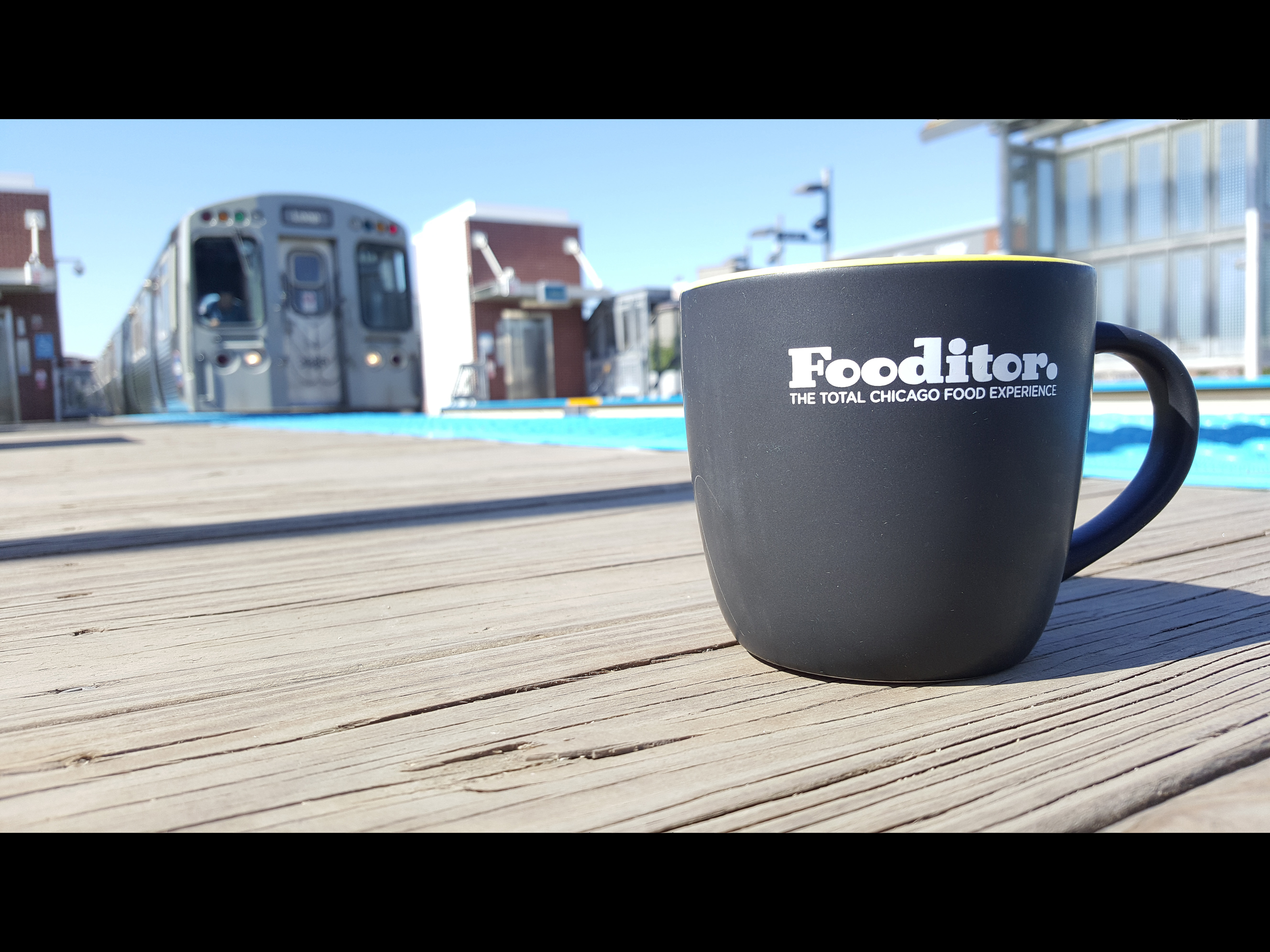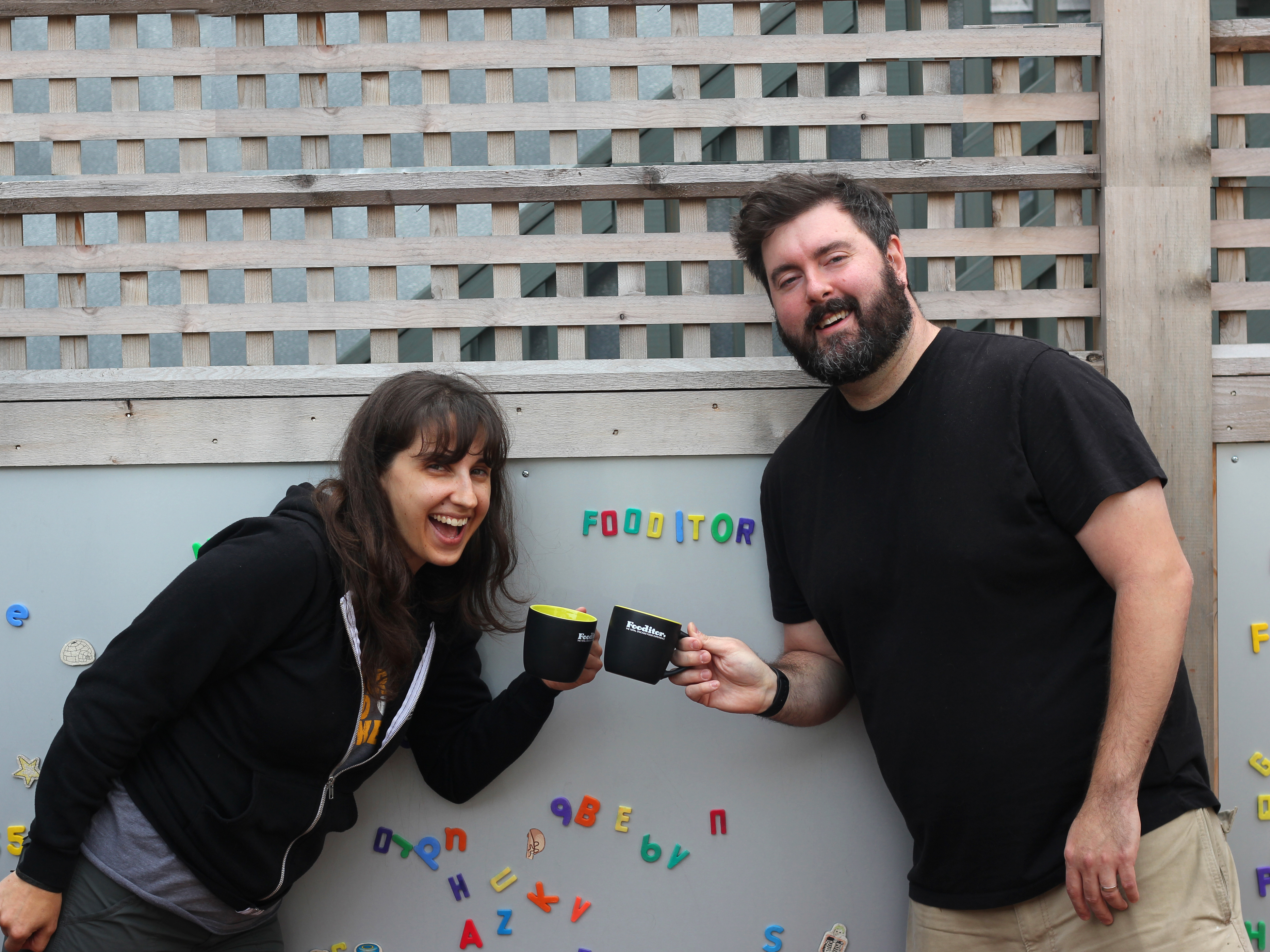One of the categories of things we plan to do at Fooditor is guides, digging deep into some part of our city’s food scene to help you understand how to enjoy, say, a particular cuisine better. In this first example, though, it’s more about understanding the whole city better.
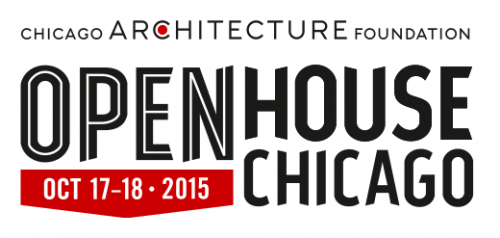
The Chicago Architecture Foundation’s annual Open House Chicago, now in its fifth year, is one of the great public events of our city—opening the doors to over 200 buildings distinguished in some way by their architecture and history. It’s a fantastic opportunity to experience one of our city’s supreme arts in all its variety, from mock-medievalist to post-modernist and everything in between. (See the full list of sites and other info here.)
But touring our city builds up an appetite. And what could better round out your appreciation of a neighborhood than by eating the food that the locals make and enjoy themselves? So I’ve put together a guide to each featured neighborhood, a list that stretches from Evanston to Pullman, listing some of the architectural highlights—and then a few restaurant suggestions for each one that will help you get to know the neighborhood behind these architectural gems, and maybe shed a little light on history of their own. (I left out Downtown—which accounts for a quarter of the total—because there’s something to eat on every corner and you probably already know it, anyway. But just because this guide focuses on the neighborhoods, don’t overlook it too.)
Bridgeport/Back of the Yards
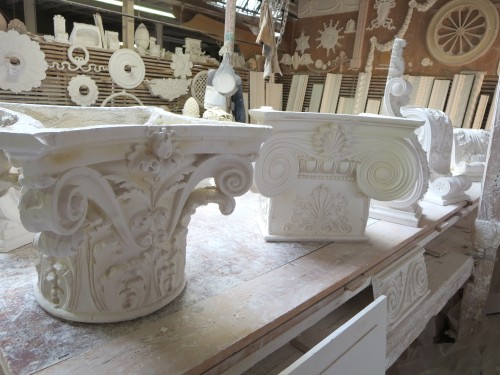
Decorators Supply Corp.
What it is: Traditional power base of Irish Chicago (but home to Lithuanians and many other groups back in the day), with many early 20th century factories and food processing plants near the former Stockyards.
What to see: One of my all time favorite OHC sites is here: Decorators Supply Corp., who’ve made plaster moldings for 100 years for old houses (and Hollywood). Other sites include the twin towers of Holy Cross Immaculate Heart of Mary church, and a number of urban food businesses including The Plant, Testa Produce and Growing Power’s Iron Street Farm.
Where to eat:
• The Duck Inn, 2701 S. Eleanor. Retro-flavored gastropub and tavern with deep Bridgeport-Irish roots.
• Pleasant House Bakery, 964 W. 31st. Classic English savory pies, using produce grown locally (they also have a production facility in The Plant).
• Schaller’s Pump, 3714 S. Halsted. Generally considered the oldest bar/restaurant in Chicago, and an unofficial headquarters of the Democratic machine, serving standard bar fare.
• Johnny O’s, 946 W. 35th. Quintessential South Side joint serving burgers, dogs, Italian beef and the Bridgeport specialty, the breaded steak sandwich.
Bronzeville
What it is: The traditional center of African-American Chicago.
What to see: Historic black churches, some IIT buildings including Carr Chapel (Mies’ “God Box”), the Swift Mansion (now the Inner City Youth & Adult Foundation) and Meyers Ace Hardware, which was once the Sunset Cafe where Louis Armstrong played.
Where to eat:
• Pearl’s Place, 3901 S. Michigan Ave. One of the city’s top soul food restaurants.
• Yassa African Restaurant, 3511 S. Martin Luther King Dr. Enjoy yassa chicken and djolof rice at this Senegalese restaurant.
• H-Dogs, 4655 S. Martin Luther King Dr. Specialty dogs and other high quality fast food offerings.
Edgewater
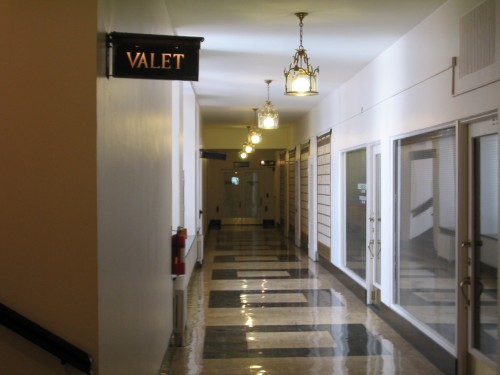
The Edgewater Beach Apartments
What it is: In the 1920s, it was Chicago’s answer to Miami Beach—swanky hotels and apartments and the upscale businesses that served their residents.
What to see: 1920s Chicago comes alive at the Edgewater Beach apartments, a couple of vintage mansions and a onetime luxury Chrysler dealership.
Where to eat:
• Pearl’s Southern Comfort, 5352 N. Broadway. Imaginative take on, well, Southern comfort and Cajun food.
• Cookies & Carnitas, 5757 N. Broadway. Upscale take on meaty fast food, plus pizza.
• Dak, 1104 W. Granville. Korean chicken wings and bulgogi in a fast food setting.
Evanston
What it is: Historic suburb home to Northwestern University, proper North Shorians like Vice President Charles G. Dawes, and famously a dry town for decades.
What to see: O irony: tour both the home of the head of the Women’s Christian Temperance Union, and long-dry Evanston’s first distillery (FEW Spirits). There are also some Northwestern buildings including the Alice Millar Chapel with its spectacular stained glass, and the psychedelic-Gothic Levere Memorial Temple, headquarters of the SAE fraternity.
Where to eat:
• Found Kitchen & Social House, 1631 Chicago Ave. Homey gastropub with a quirky junk-shop feel.
• Edzo’s Burger Shop, 1571 Sherman. Much-beloved burger joint.
• Claire’s Korner, 1827 Emerson. Engaging owner serving up big portions of Jamaican food.
Garfield Park/North Lawndale
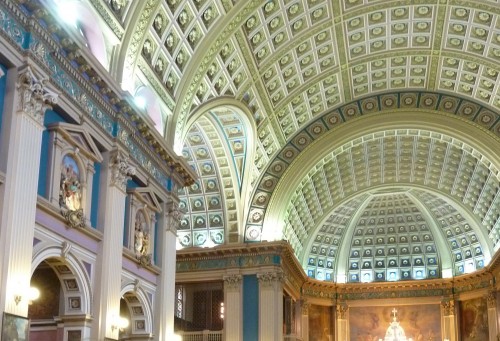
Our Lady of Sorrows Basilica & National Shrine
What it is: African American community has some spectacular vintage sites within a pretty disadvantaged area, and at least some are finally being utilized in new ways.
What to see: Remnants of the old Sears & Roebuck complex are one obvious attraction, including the original Sears tower and the former power plant that’s now a tech high school. There’s also the complex that holds both Lagunitas Brewery and the Cinespace film studio, and the enormous Our Lady of Sorrows Basilica (which is where Sean Connery first told Kevin Costner about the Chicago way).
Where to eat:
• Ruby’s Restaurant, 3175 W. Madison. The former Edna’s soul food restaurant is a slice of history itself as a meeting place for the civil rights struggle in Chicago (if only fair for breakfast or lunch).
• Crazy Bird Chicken, 1138 S. California. Very good fried chicken and weekend barbecue spot; take-out only.
• Inspiration Kitchens, 3504 W. Lake. Soul food and Cajun-flavored west side outpost of the organization that trains the homeless to become cooks and servers.
Gold Coast
What it is: Wealthy lake shore enclave.
What to see: Vintage mansions from the late 19th and early 20th century, such as the one housing The Palette & Chisel Academy of Fine Art, where Lorado Taft taught society ladies.
Where to eat:
• The Pump Room, 1301 N. State Parkway. 1950s celebrity hangout has been redone in modern chic and glitz, and it’s pretty good these days.
• The Glunz Tavern, 1202 N. Wells. German-American restaurant filled with memorabilia and furnishings from past German establishments and the Glunz family’s liquor business.
• Doc B’s Fresh Kitchen, 100 E. Walton. Better than most healthy foods spot with a wide menu.
Goose Island
What it is: Industrial area, the city’s only true island of note, with churches you’ve seen from the expressway forever.
What to see: A pair of spectacular Catholic churches (St. Mary of the Angels and St. John Cantius) are the obvious landmarks, or you might enjoy Chicago Scenic Studios or the VCNA concrete works—but the draw will probably be a chance to see inside the Birch Road Cellar & Social Club, a private, BYO drinking club with a secret location (you have to RSVP to get the address).
Where to eat:
• Goose Island Shrimp House, 1013 W. Division. Fried shrimp joint, once the only restaurant actually on Goose Island, serves the factory workers nearby.
• American Wildburger, 1202 N. Wells. Despite the gas station location, a solid gourmet burger spot serving things like salmon and turkey burgers as well as beef.
• Ada Street, 1664 N. Ada. Tavern and restaurant in a hidden industrial location off Elston.
• Sono Wood Fired Pizza, 1582 N. Clybourn. Nice wood-fired pizzas and antipasti.
Hyde Park

Robie House
What it is: The home base of the University of Chicago and a wealthy Jewish enclave in the mid-20th century, with some spectacular homes (one in particular).
What to see: Go early for open house at Frank Lloyd Wright’s Robie House—it will draw lines, guaranteed. Otherwise it’s mostly churches (and a synagogue) and U of C standards like the Oriental Institute, but don’t miss the restored Grand Ballroom (aka the Cinderella Ballroom) with its stunning bandshell.
Where to eat:
• The Promontory, 5311 S. Lake Park Avenue West. Impressive bar, restaurant and music venue complex from the same group as Longman & Eagle and Dusek’s.
• Valois Cafe, 1518 E. 53rd. Greek steam table joint, celebrated for its multiracial clientele in a sociological study (Slim’s Table), best at breakfast.
• Harold’s Chicken Shack, 1208 E. 53rd. This local fried chicken chain can vary greatly, but Hyde Parkers swear by their outlet.
Lakeview
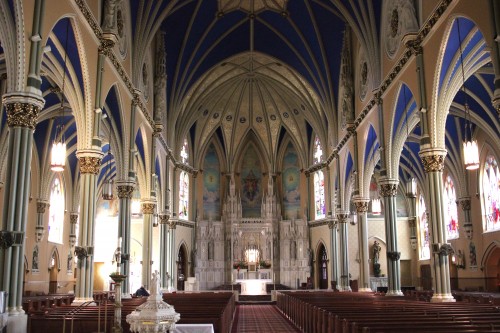
St. Alphonsus
What it is: Affluent housing area on the lake front, mostly dating to around the 1920s.
What to see: Lakeview’s first year on the tour takes you backstage at a couple of theaters (including the Music Box) and a couple of churches (including the soaring St. Alphonsus), as well as the Salvation Army college at Broadway and Addison and a B&B with a secret bar underneath.
Where to eat: Lakeview has plenty of places to get a burger and beer, so I’ll focus on some of the lesser-known food cultures in the area:
• Rice’N Bread, 3435 N. Sheffield. Scrubbed-up, Korean-owned successor to the long-running Japanese diner Hamburger King, still offering some of its specialties like Akutagawa (a sort of Asian-influenced scramble).
• Tango Sur, 3763 N. Southport. Reasonably priced Argentine steakhouse which grew out of the market next door (and where, if you just want a light lunch, you can still grab a couple of empanadas to go).
• Zizi’s Cafe, 2825 N. Sheffield. Very friendly Turkish restaurant with fresh-baked bread.
• Keren Kitchen, 1513 W. Irving Park. Welcoming restaurant serving Eritrean food.
Lincoln Park
What it is: Another affluent housing area on the lake front, a little older than Lakeview.
What to see: Lincoln Park ties for shortest list—four sites—but it includes two spectacular buildings hidden in plain sight, the grand marble halls of the Elks National Memorial and the shrine of Mother Cabrini, as well as the Romanesque Revival Brewster Apartments from 1893, with their metal and glass catwalks.
Where to eat: Like Lakeview, Lincoln Park is full of fast food and sports bars, but here are a few more interesting choices:
• Rickshaw Republic, 2312 N. Lincoln. Dine on Indonesian food in a room full of authentic Indonesian puppets and other decor.
• Del Seoul, 2569 N. Clark. The L.A. Korean taco craze came to Chicago at this place, and they’re pretty good.
• Aloha Eats, 2534 N. Clark. What’s Hawaiian food? Find out here.
• RJ Grunt’s, 2056 N. Lincoln Park West. Okay, interesting isn’t exactly the word for the food at the original Lettuce Entertain You restaurant, by modern standards it’s standard fare, but it remains a perfect time capsule of early 70s dining, from the jokey menu and photos of the hippie-chick waitresses on the walls to Chicago’s first salad bar. Can we get a landmark designation already?
Lincoln Square/Ravenswood
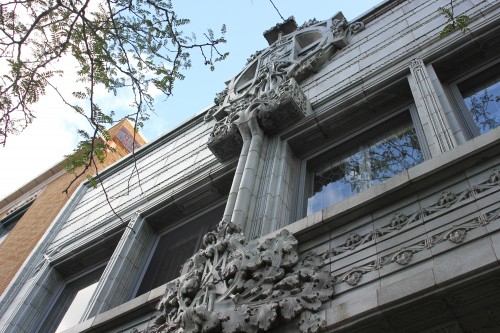
Krause Music Store
What it is: A fairly modest one time German enclave with a few more ambitious buildings on its main streets, and a lot of reused factory buildings along the Ravenswood train lines.
What to see: Lincoln Square’s obvious highlight—Louis Sullivan’s ornately decorated Krause Music Store—is on the list, but it’s also a chance to go inside the echt-German DANK-Haus, the WPA-era Old Town School of Folk Music and the factory turned event space Ravenswood Event Center, with its collection of old cars to look at before your wedding starts.
Where to eat:
• Chicago Brauhaus, 4732 N. Lincoln Ave. The old German Lincoln Square is just about gone restaurant-wise, but this survivor gives you an idea of what it once was like.
• Baker Miller Bakery & Millhouse, 4610 N. Western. Coffeehouse and natural bakery (they mill their own everything); baked goods are good, oatmeal and grits are sublime.
• Rainbow Thai Cuisine, 4825 N. Western. Chicago’s original center of Thai food was right around Lincoln Square, and this might be the best in the area now, though you almost can’t go wrong with any of them—Opart, Spoon, Rosded.
For more recommendations: See the Destinator guide to Lincoln Square.
Near West Side/West Town
What it is: Industrial and food market area that’s become a tech and startup center and a hot restaurant row.
What to see: Mostly factory buildings repurposed into things like the BuiltWorlds Media Headquarters, which apparently has something to do with virtual reality or something—as well as the over-the-top, Disney-on-hashish Alhambra Palace Restaurant.
Where to eat: Although this area is full of great lunch spots (Publican Quality Meats, Cemitas Puebla, J.P. Graziano’s. etc.) on Saturday, it shuts down like a small town on Sunday, when you’ll be better off looking on adjacent major streets or in Greektown. Everything listed here is open both days (except Maxwell Street).
• Urbanbelly, 1400 W. Randolph. Korean barbecue and fusion dishes.
• Meli Cafe & Juice Bar, 301 S. Halsted. Reliable, popular Greek breakfast place with big plates and housemade jams.
• Greek Islands, 200 S. Halsted. The quintessential Greektown restaurant; Greek dishes are comfy, grilled fish is fresh, simple and perfect.
• Maxwell Street Market, 800 S. Desplaines and area. Chicago’s century-old open-air market and immigrant entry point into the commercial life of Chicago started with Jewish peddlers, became a center for the blues, and today offers terrific Mexican food. Sunday only, 7 am to 3 pm.
For more recommendations: See the Destinator guide to the West Loop.
Pilsen
What it is: Built as a Czech neighborhood, then a longtime Latino enclave, but grand old buildings and close proximity to downtown see it gentrifying rapidly today.
What to see: See Pilsen’s Czech past at 19th century opera house Thalia Hall and some of the churches, then get a taste of its gentrifying Mexican present at the Hector Duarte Studio (and some of the churches).
Where to eat:
• Dusek’s, 1227 W. 18th. Have a Juicy Lucy at the trendy restaurant in Thalia Hall.
• Carnitas Uruapan, 1725 W. 18th. Weekends in Pilsen are for porky Mexican feasts of carnitas by the pound at places like this.
• Nuevo Leon, 1515 W. 18th. Always packed on weekends, this place does norteño style Mexican, heavy on steak, and some of the best chilaquiles in town.
• Dia de los Tamales, 939 W. 18th. Cuban-style tamales mixed with fusion flavors.
Pullman
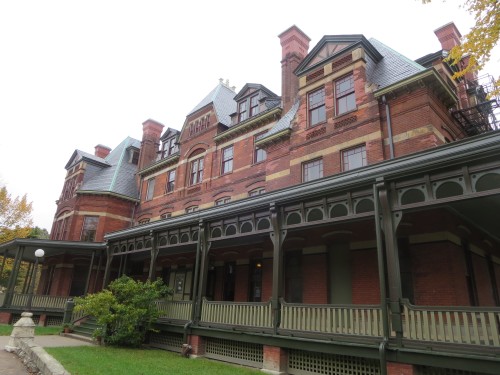
Hotel Florence
What it is: Railroad baron’s early planned town for his workers, which ended badly with a bitter strike.
What to see: The Pullman company-built homes, the unique green-limestone church and the closed Hotel Florence are in great shape, the factory and other parts are atmospheric ruins. Also, Argus Brewery, a craft brewery in an old Schlitz facility—located across the street from then-dry Pullman.
Where to eat: There’s basically nowhere within Pullman itself, but here are some notable southeast side places not too far away:
• Hienie’s Shrimp House, 10359 Torrence Ave. The name says shrimp, but this is one of the top fried chicken joints in the city, served with the southeast side’s unique orange sauce (basically mustard mixed with hot sauce, if you ask me).
• Calumet Fisheries, 3259 E. 95th. Fried shrimp and smoked chubs rule at this place overlooking the river; watch the barges slowly lumber by as you eat from your bag.
• Old Fashioned Donuts, 11248 S. Michigan Ave. Terrific apple fritters and blueberry doughnuts, though they could make walking around difficult later.
• Anita’s Gumbo, 8100 S. Stony Island. Good gumbo and Cajun dishes. Closed Sunday.
Rogers Park
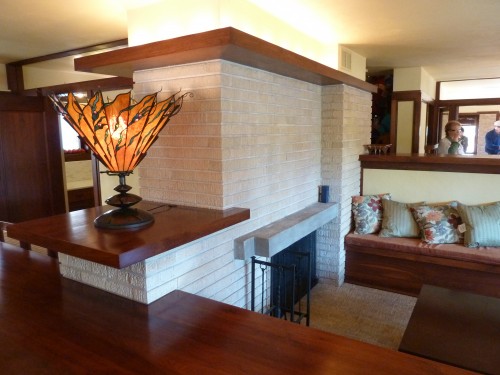
Emil Bach House
What it is: Genteel community on the lake front when built in the 1920s, now one of the city’s great melting pots.
What to see: Frank Lloyd Wright’s Emil Bach House draws the biggest crowds, but the most beguiling sights might be the Art Deco-era swimming pools hidden in the basements of the Park Castle condominiums and the Park Gables apartments.
Where to eat:
• Tamales lo Mejor de Guerrero, 7024 N. Clark. Lots of good Mexican along Clark here, and one favorite is this excellent tamale shop.
• Susie’s Noon Hour Grill, 6930 N. Glenwood. Tiny, personable Korean diner.
• Royal Coffee, 6764 N. Sheridan. Looks like a bright coffee and panini shop, but it also serves African food from the same place as the coffee (Ethiopia).
• Ghareeb Nawaz, 2032 W. Devon. Order by the pictures at this excellent and very cheap, if admittedly somewhat intimidating, Pakistani restaurant.
South Loop/Prairie Avenue
What it is: The original getaway from downtown for the wealthy in Chicago, with some beautiful houses on Prairie Avenue (when they weren’t torn down long ago).
What to see: Only four sites this year, but they include the city’s oldest house (the Clarke House Museum) and the Second Empire-style Wheeler Mansion, plus a new garden on top of McCormack Place.
Where to eat: You’re so close to Chinatown (and it’s most likely to be open on Sunday), so head there:
• Go 4 Food, 212 W. 23rd. Great fresh seafood and good versions of classics like Hot and Sour Soup.
• Cai, 2100 S. Archer Ave., Suite 2F (upper level). Busy, popular dim sum place in the Chinatown mall on Archer.
• Lao Yunnan, 2109 S. China Pl. Smaller, quieter spinoff of Lao Sze Chuan has many of the same dishes plus some Yunnanese specialties; don’t miss tea-smoked duck.
• Richland Center, 2002 S. Wentworth. Downstairs food court with a variety of stands offering everything from dumplings to grilled skewers to takoyaki.
South Shore
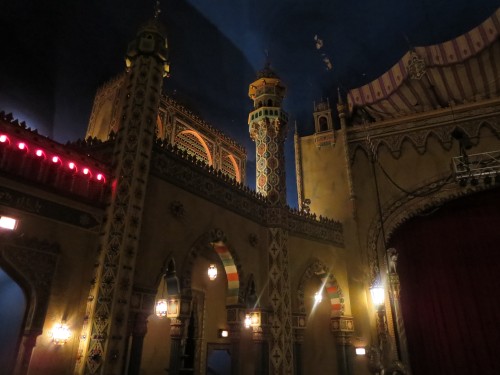
New Regal Theater
What it is: African-American neighborhood long in the shadow of the steelworks.
What to see: The lavish New Regal Theater, closed for some years but still in excellent shape, is one highlight here; another is the bus tour of the huge former U.S. Steel site, beginning the transition into an eco-friendly development.
Where to eat:
• 5 Loaves Eatery, 405 E. 75th. Charming breakfast/soul food spot for things like chicken and waffles.
• Lem’s Bar-B-Q, 311 E. 75th. The city’s oldest barbecue spot, cooking up rib tips and hot links in a vinegary sauce. Take-out only.
• Kusanya Cafe, 825 W. 69th. Hipster coffeehouse, with sandwiches named for black celebrities.
• Garifuna Flava, 2518 W. 63rd. Caribbean restaurant, a rare one featuring the food of the Garifuna people of Belize.
Ukrainian Village
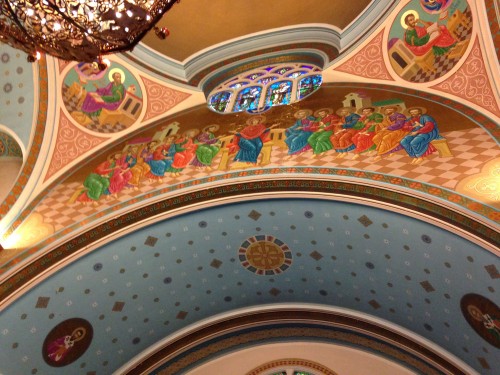
St. Nicholas Ukrainian Catholic Church
What it is: Ukrainian enclave is gentrifying, but its immigrant character is still plainly visible.
What to see: Four spectacular Ukrainian churches, including Louis Sullivan’s Holy Trinity Russian Orthodox Cathedral (the smallest but most harmonious of the bunch; that was it in the main image at the beginning of this article).
Where to eat:
• Old Lviv, 2228 W. Chicago. The last Ukrainian restaurant in the neighborhood, offering a buffet of traditional dishes like stuffed cabbage and pelmeny.
• Ann’s Bakery & Deli, 2158 W. Chicago. Eastern European baked goods and prepared foods.
• The Winchester, 1001 N. Winchester Ave. All-day restaurant serving artfully prepared foods.
• Whisk, 2018 W. Chicago. Funky breakfast place with a decorating thing for Ron Swanson.
Michael Gebert is the adaptively reused editor of Fooditor.
Latest
Join the Discussion
After you comment, click Post. If you're not already logged in you will be asked to log in or register with Disqus.




